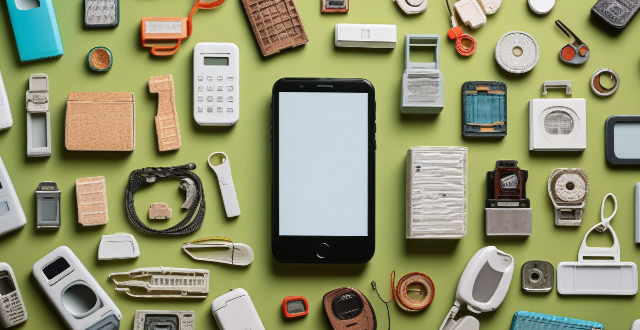Mobile phone recycling is a process that involves repurposing old or damaged devices into new products. The process includes collection, sorting, dismantling, recycling, and repurposing of valuable components. This helps reduce waste, conserve resources, and create jobs while also providing economic incentives for manufacturers and consumers.

How Does Mobile Phone Recycling Work?
Mobile phone recycling is the process of repurposing old or damaged mobile phones into new products or materials. This process helps reduce waste and conserve resources by extracting valuable components from discarded devices. Here's a detailed explanation of how mobile phone recycling works:
Collection
1. Drop-off Locations: Many retailers and local authorities provide designated drop-off locations for old mobile phones. These can be found in stores, libraries, or community centers.
2. Mail-in Programs: Some companies offer mail-in programs where you can send your old device to their recycling center for free.
3. Buyback Programs: Some manufacturers and carriers have buyback programs where they offer discounts on new devices in exchange for old ones.
4. Trade-in Events: Occasionally, trade-in events are held at malls or other public places where people can bring their old devices for recycling.
Sorting
Once collected, the mobile phones are sorted based on their condition, brand, and model. This helps determine the best method for recycling each device.
Dismantling
The sorted devices are then dismantled to remove any hazardous materials such as batteries, screens, and circuit boards. This step also involves separating valuable components like metals and plastics.
Recycling
After dismantling, the separated components are sent to specialized facilities for further processing:
1. Metals: Precious metals like gold, silver, and copper are extracted from circuit boards and other components through a refining process.
2. Plastics: Plastics are shredded and melted down to create new plastic products.
3. Glass: Screens made of glass are crushed and used in construction materials or road bases.
4. Batteries: Batteries are handled separately due to their hazardous nature and are either recycled or disposed of safely.
Repurposing
Finally, the recycled materials are repurposed into new products or used to create raw materials for manufacturing. For example:
* Metals extracted from old phones can be used in jewelry, electronics, or even aerospace equipment.
* Recycled plastics can be molded into new cases or other electronic accessories.
* Crushed glass can be incorporated into building materials like concrete or asphalt.
Benefits of Mobile Phone Recycling
* Resource Conservation: By recycling mobile phones, we conserve natural resources that would otherwise be depleted through mining and drilling.
* Energy Savings: Recycling requires less energy than producing new products from raw materials.
* Reduced Waste: Recycling reduces the amount of electronic waste ending up in landfills, which helps protect the environment.
* Job Creation: The recycling industry creates jobs for individuals involved in collection, sorting, dismantling, and repurposing processes.
In conclusion, mobile phone recycling is an essential part of responsible consumption and sustainable practices. By participating in these programs, we can all contribute to reducing our environmental impact while enjoying the benefits of advanced technology.